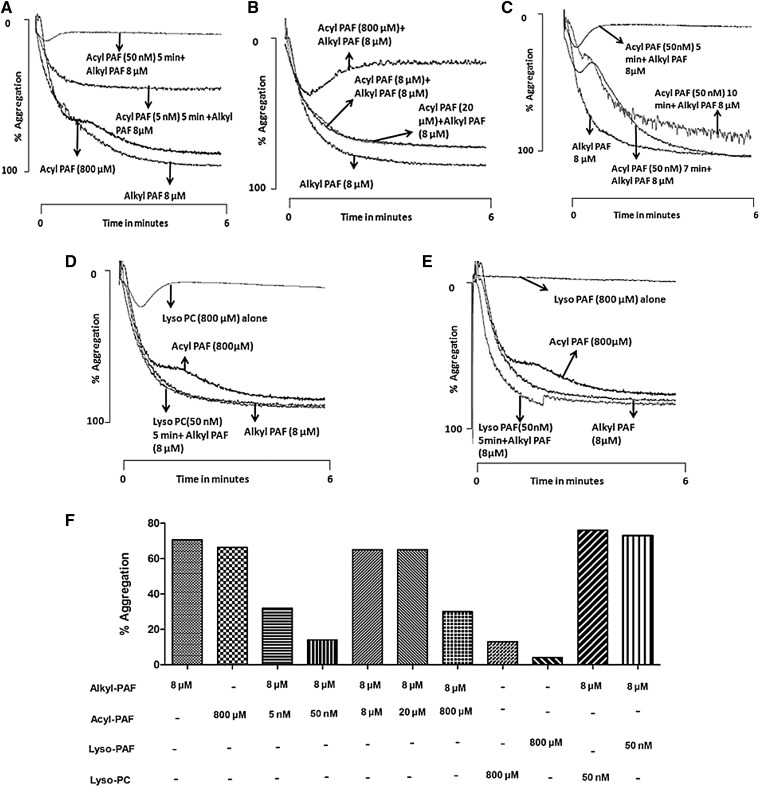Fig. 5.
Dampening of PAF-R activation by acyl-PAF, lyso-PC, and lyso-PAF and the subsequent reactivation of PAF-R on human platelets. A: The stated amounts of acyl-PAF (5 or 50 nM) were prepared as described previously, incubated for 5 min with PRP (4 × 108platelets/ml), and then stimulated with alkyl-PAF (8 μM) to induce aggregation. In some experiments (B), platelets were costimulated with alkyl-PAF (8 μM) and acyl-PAF (8, 20, or 800 μM). C: PRP was preincubated for various time periods such as 5, 7, or 10 min with a fixed amount of acyl-PAF (50 nM) before the addition of alkyl-PAF (8 μM). In some experiments (D, E), PRP was pretreated with lyso-PAF (50 nM) (D) or lyso-PC (50 nM) (E) for 5 min and then monitored for aggregation after the addition of alkyl-PAF (8 μM). The effect of lyso-PAF alone (D) or lyso-PC alone (E) on PRP aggregation was also measured. Each set of experiments used platelets from the same donor and then was repeated with platelets from at least three different donors. In each aggregation panel, alkyl-PAF (8 µM) and acyl-PAF (800 µM) were used to monitor the response of platelets. The percentage platelet aggregation is shown in the bar graph (F). All assays were performed with the use of a Chrono-log platelet aggregometer, and traces were recorded with the use of AGROLINK software.

